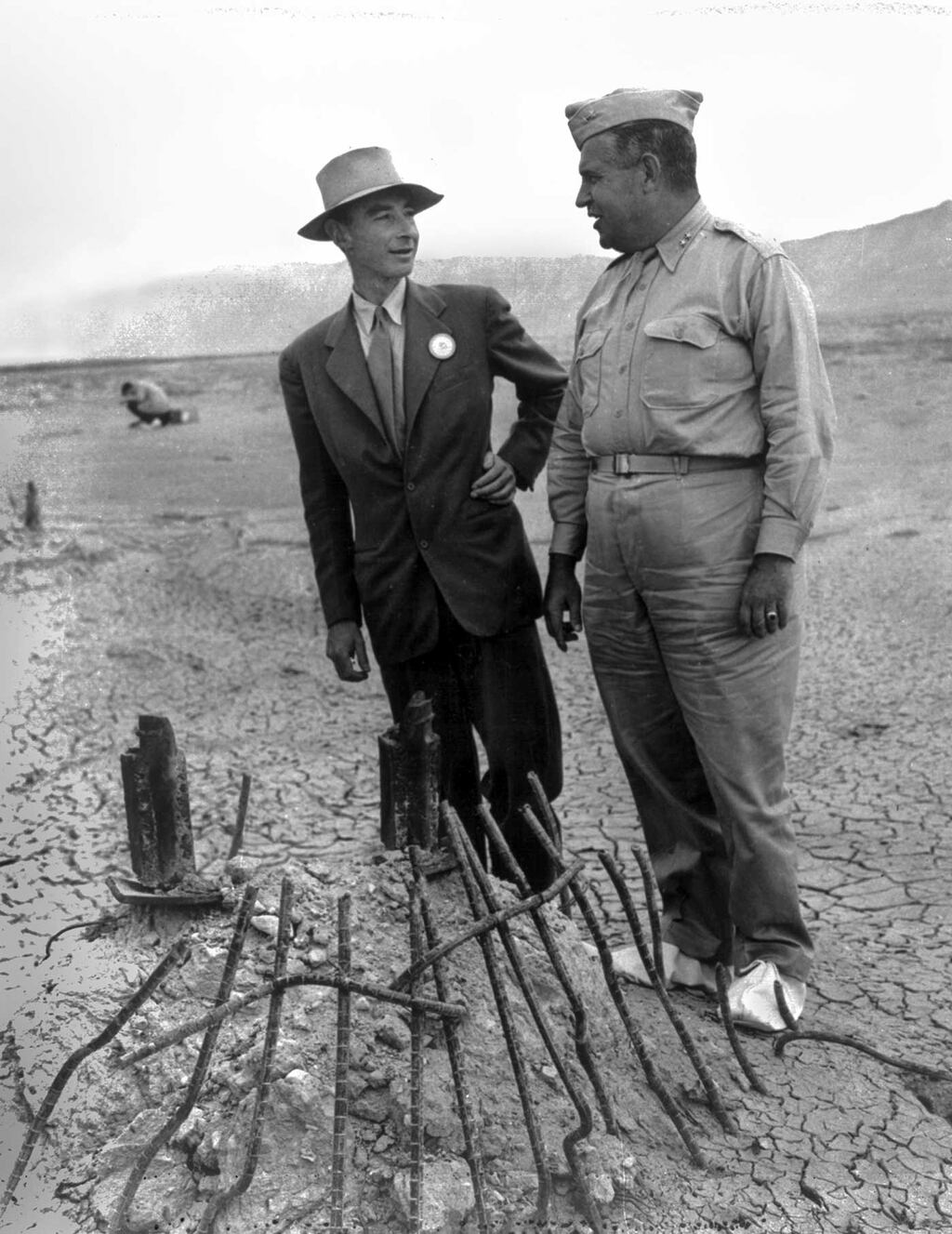The film Oppenheimer was released earlier this year. J Robert Oppenheimer (1904 – 1967) was the theoretical physicist who directed the Los Alamos Laboratory scientific team at the heart of the Manhattan Project, the military research project that developed the first atomic bombs. The film resurrects two burning questions – should atomic bombs been developed in the first place? And should they have been used in the second World War? The people tasked with making these decisions at the time faced excruciatingly difficult circumstances.
Should science have developed an atomic bomb? The technical development of the atomic bomb was entirely a science-based project. In 1938 German physicists Otto Hahn (Nobel Prize 1944), Lise Meitner and Fritz Strassmann discovered nuclear fission in Berlin. Nuclear fission, in which matter is converted into energy, is the basis for the original atomic bomb and the Nazi government began a program in 1939 to develop nuclear power and nuclear weapons. An atomic bomb has awesome explosive power and the side with access to such a bomb would inevitably win the war.
Responding to fears that Germany was developing the bomb, and in particular, to a letter from Albert Einstein warning of this possibility, President Franklin D Roosevelt (1882 – 1945) set up the Manhattan Project on December 28th, 1942 to develop a working atomic bomb. On July 16th, 1945 the US detonated the first atomic bomb in the New Mexican desert – the Trinity Test.
As it later transpired, the Germans were not even close to developing the atomic bomb by the end of the second world war (1939 – 1945). German scientific expertise was well up to the task but resources were stretched too thin to complete the job.
Actor Armie Hammer resurfaces as host of celebrity podcast
Heart-stopping Halloween terror: 13 of cinema’s greatest jump scares
Doctor Odyssey’s core message: just imagine Pacey from Dawson’s Creek holding you tight and saying, ‘Shhh, it’s okay’
Conor Niland’s The Racket nominated for William Hill Sports Book of the Year
[ Ernest Walton and the atomic bombOpens in new window ]
[ Hiroshima officials condemn nuclear deterrence ‘folly’Opens in new window ]

There is no doubt that atomic weapons are intrinsically bad but, in my opinion, the Allies had little choice, given the information to hand at the time, but to develop the bomb. Their options were stark – build the bomb first or wait for Germany to do the job. In the latter eventuality the nuclear genie would still be out of the bottle and the world would also descend into barbarity for the foreseeable future.
On August 6th, 1945 a B-29 bomber dropped the first atomic bomb on Hiroshima, a uranium–based bomb called Little Boy. The Japanese did not surrender. On August 9th the Americans detonated a second plutonium–based bomb called Fat Man over Nagasaki. The Japanese surrendered on August 14th. To this day, these are the only nuclear bombs ever used in warfare.
The acute effects of the blasts killed about 70,000 people in Hiroshima and about 40,000 people in Nagasaki. Subsequently, tens of thousands more died from the effects of wounds and radiation exposure.
Should the atomic bombs have been used in Japan? There is a very strong argument that ending the war by exploding the atomic bombs saved millions of lives. The next phase of the Pacific War would have been an invasion of the Japanese mainland. Intelligence indicated the Japanese had no intention of unconditional surrender and, at a minimum, would attempt to inflict sufficiently heavy losses on the Allies to justify favourable terms in a negotiated ceasefire.
Fighting on mainland Japan would be incredibly difficult.
For the first time in the Pacific War the Japanese could rely on reinforcement of their fighting units in mainland battles – the Allies had prevented reinforcement during prior fighting on Pacific islands. American physicist William Shockley (Nobel Prize 1956) estimated an invasion of Japan would result in 1.7 – 4 million American casualties, including up to 800,000 deaths, and 5-10 million Japanese deaths. American deaths in the second World War to date were about 292,000. The invasion of Japan would kill more than the total number of Americans already killed in the second World War up to that time. Also, every day the war continued hundreds of prisoners of war (POWs) and others were being abused and killed in camps throughout the occupied Japanese empire.
US president Harry Truman (1945-1953) - “The Buck Stops Here” - decided to drop the bombs and end the war and, ever since, the mushroom cloud image has haunted the human imagination.
Whatever our personal opinions on this question (for example, was Japan given sufficient time to ponder before the second bomb was dropped?) one must empathise with those who had to make the decision. What can you do when all your options are awful but you pick the least awful option?
William Reville is an emeritus professor of biochemistry at UCC





